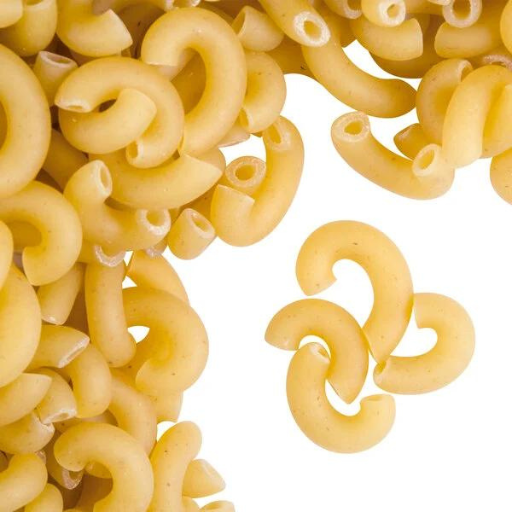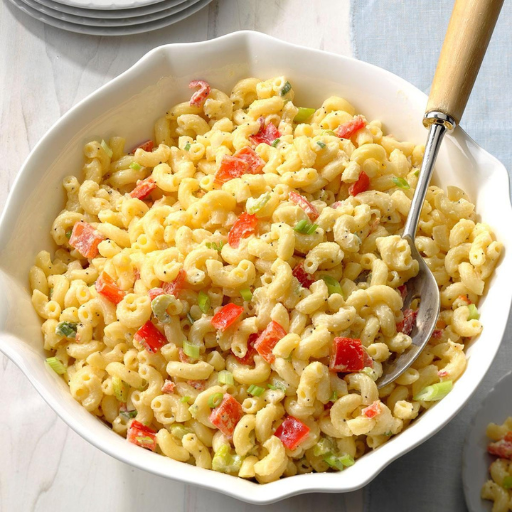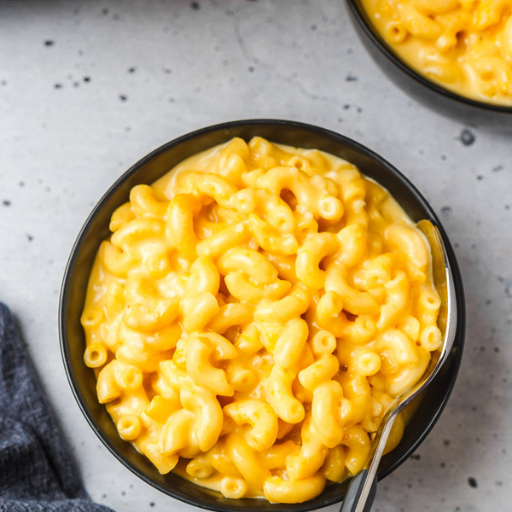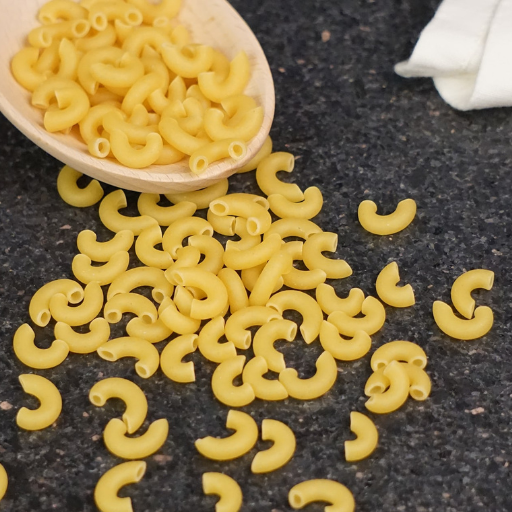Elbow macaroni noodles are a staple in many households around the world, beloved for their versatility and ease of use in a wide variety of dishes. Whether you’re whipping up a classic comfort food like macaroni and cheese or experimenting with a gourmet pasta salad, these small, curved noodles are the perfect base for a multitude of culinary creations. In this blog, we’ll delve into the many facets of elbow macaroni, exploring delicious recipes, nutritional benefits, and tips for selecting and cooking this popular pasta. Join us as we uncover why elbow macaroni should be a pantry essential and how it can inspire your next meal.
What Makes Elbow Macaroni an Essential Pantry Ingredient?
Understanding macaroni nutrition and dietary benefits
Macaroni elbows are multipurpose and also have a range of nutrients. They are generally made from durum wheat semolina, which is a good source of complex carbohydrates that the body needs for energy. Moreover, elbow macaroni has low fat content and contains vitamins such as iron and B vitamins which are essential minerals to the body. For those who would like more protein in their food, there are whole grain or high-protein versions available. Macaroni is also suitable for people who need gluten-free alternatives with many options including rice, quinoa or legumes. Including elbow macaroni in your diet can help to diversify your nutrient profile making it worthwhile pantry staple.
The difference between elbow macaroni and other pasta shapes
Elbow macaroni looks different because it is small and curved enabling it to be used effectively in certain recipes not possible with other pastas. Elbow macaroni unlike longer thinner strands like spaghetti or diagonally cut tubular ones such as penne can hold up better under thick sauce and cheese since they capture bits of meat, vegetables as well as sauce enhancing taste on every bite. In dishes such as macaroni salad the hollow form of an elbow allows it to take up dressing while at the same time mixing with diced vegetables and proteins evenly creating a sense of balance in the dish.
Why elbow macaroni is a must-have for classic recipes
Elbow macaronis role in numerous classic recipes comes from its ability to do many things well hence enhancing diverse culinary creations. It is featured prominently in cherished comfort foods like mac-n-cheese where its tiny curved shape enables each mouthful to be filled with deliciousness by clinging onto creamy cheese sauces. In a pasta salad, the hollow nature of an elbow makes room for dressings thereby combining seamlessly with chopped vegetables plus meats creating both satisfying and balanced texture.
Technical Parameters:
- Size and Shape: Elbow macaroni is typically small and curved measuring about 25-30 mm long and 2.7-3.3 mm wide which makes it to cook faster and mix well with other ingredients.
- Surface Area: The texture of elbow macaroni as well as its hollow structure allows for greater surface area in relation to volume hence improving sauce holding capability while enhancing taste of the dish.
- Cooking Time: A typical cooking time for elbow macaroni is between seven to nine minutes making it a fast meal option.
- Nutritional Profile: Macaroni is made from durum wheat semolina giving complex carbohydrates, important vitamins, and minerals, with available varieties such as whole grain, high-protein, gluten-free options providing better alternatives to suit different dietary needs.
Incorporating elbow macaroni into classic recipes ensures a delightful dining experience, thanks to its functional properties and nutritional benefits.
Classic Macaroni and Cheese: A Timeless Recipe
Cooking the Mac and Cheese with Elbow Noodles to Perfection
Ingredients:
- 8 ounces elbow macaroni
- 2 cups shredded sharp cheddar cheese
- 1/2 cup grated Parmesan cheese
- 3 cups milk
- 1/4 cup butter
- 2 1/2 tablespoons all-purpose flour
- 1/2 teaspoon salt
- 1/2 teaspoon black pepper
- 1/4 teaspoon paprika (optional)
- 1/4 teaspoon mustard powder (optional)
Prepare the Noodles:
- Bring a large pot of water with salt to boil.
- Put in elbow macaroni, cook for 7-9 minutes or until al dente. Then, drain it and set aside.
Prepare the Sauce:
- Melt butter in a medium saucepan over medium heat.
- Add flour to it and keep stirring until bubbly and smooth – that should take around 1-2 minutes.
- Slowly add milk into this mixture stirring it to prevent any lumps forming. The mixture should thicken as you continue stirring till boiling point is reached centering about thirty eight minutes while at the same time heating up all other ingredients together such as black pepper, salt, paprika or mustard powder that may be used depending on your taste preference.
Combine Cheeses:
- Reduce heat then stir in grated cheddar cheese and parmesan cheese. Stir until melted cheese blends completely with sauce making it soft.
- Make Macaroni and Cheese:
- Mix cooked noodles with this sauce so that each one is covered by it nicely.
Bake (Optional):
- Preheat oven to approximately three hundred fifty degrees Fahrenheit or one seventy five degrees Celsius at first though subsequent stages will vary in terms of temperature and duration applied during cooking according to recipe requirements like how long particular meal takes before being served hot after being taken out from oven so as not make certain dishes lose their originality through excessive baking times causing them turn too brown becoming crispy hence ending up unappetizing.
Serve:
- Allow it to stand for few moments after removing from oven. Relish the richness that comes with homemade macaroni cheese recipe.
- For crunchiness on upper side mix little melted butter into bread crumbs before putting in oven.
Picking the Right Cheese Blend for an Enjoyable Taste
To create a truly delicious mac and cheese, it is important to select the right cheese blend. A good combination of sharp cheddar along with Gruyère or Gouda, which are creamy cheeses, will give you a balanced and flavorful taste. Sharp cheddar provides the needed bite and meltability while both Gruyère and Gouda possess a creamy nut like undertone, which enhances overall flavors. Additionally, adding some Parmesan cheese imparts savory umami flavours to the dish. The amount of each type of cheese can be varied in ratios according to individual preferences thus customizing every mouthful.
Tips for achieving a creamy comforting meal always
- Quality Ingredients: Begin by using fine quality cheeses plus fresh milk so that sauce is rich in flavor.
- Proper Pasta Cooking: Just cook pasta until al dente since overcooking leads to change in texture when baking is done thereby spoiling overall feel.
- Roux Making: Prepare a roux (butter plus flour) when making cheese sauce so that you achieve thickened desirable consistency without any lumps; simply cook until golden brown so as not have raw aftertaste when eating your meal later on.
- Sneak In Cheese Gradually: Add your preferred quantity of grated slowly while off fire this will prevent clumping resulting smoothness throughout whole mixture till its very end whilst melting over heat source such as stove top or whatever cooking surface being used during preparation step process mentioned above concerning guidelines given under preparation headnotes either before proceeding other tips shared here next paragraphs following labeling title name lest one forgets trick behind proper blending procedure between these two components comprising dish.
- Whole Milk Works Best: Go for full cream milk or whole body fat version in order that it yields lusciously creamy sauce rather than granulated texture which comes from using lower percentages like those found fat free products after production process has been completed lastly these ingredients should be mixed together well either manually with hand whisk ending up neat thick liquid mixture easy pouring done into baking dish directly finally getting ready oven when temperature is adjusted accordingly as per recipe instructions specifying length time required heat before serving while still warm straight after removing it out off cooking appliance otherwise this type may lose its original taste because excessive overheating causes browning turns crispy thus become unappetizing case others.
- Reduce Heat and Cook Slowly: The cheese should be melted into the sauce using a low heat instead of high heat. By keeping the temperature gentle, it will prevent the sauce from becoming gritty and separating.
Adhering to these pointers adopted from expert opinions found in various cooking sites helps you achieve constant creamy, comforting macaroni and cheese.
Exploring Unique Elbow Pasta Salad Recipes
How to choose the right ingredients for a delicious pasta salad
To make an appetizing pasta salad, it is important to select the most suitable ingredients. Below are some insights from current top websites:
- Fresh Vegetables: Crispy and colorful, vegetables such as cherry tomatoes, cucumbers, bell peppers and red onions will give your pasta salad a satisfying crunch.
- Quality Elbow Pasta: Go for the best elbow-shaped pasta which should be cooked to al dente perfection. This gives you that firm base that holds dressings well.
- Protein Add-ins: Include proteins such as grilled chicken, shrimp or chickpeas. They not only increase its nutritional content but also adds taste satisfaction.
- Cheese: Feta, mozzarella pearls or shaved Parmesan introduce a creamy consistency and full flavor counterposed against vegetables.
- Herbs: Fresh herbs like basil, parsley or dill make the salad more aromatic so as to add even more refreshing flavor.
- Dressings: Light yet tangy dressings should be made from olive oil, vinegar such as balsamic or wine vinegar), lemon juice with little honey or Dijon mustard for balance.
Blend these highest-recommended ingredients and you will have a deliciously enjoyable and well balanced pasta salad.
Role of elbow macaroni in creating texture and flavor
Elbow macaroni helps in achieving great texture and taste in pasta salads. It provides that robust base that goes well with creamy dressings or flavorful sauces because it’s firm but still slightly chewy especially when boiled al dente. The hollow center of this type of pasta also enables it absorb and hold onto sauces ensuring that every bite has flavor. Its versatility means that it can go with several different ingredients ranging from fresh veggies to hearty proteins thus making elbow macaroni fit perfectly into various kinds of good tasting textures/tastes in pasta salads.
Seasonal Variations for Year-Round Enjoyment
A seasonal variation of pasta salad implies that you take advantage of the ingredients that are available in that time of year, and thereby ensuring a fresh and flavored dish throughout the year.
- Spring: Add spring freshness with asparagus, peas, radishes while embracing bright flavors. Mint and parsley herbs can also coolly accent your pasta dish with lemon vinaigrette.
- Summer: Incorporate juicy tomatoes, cucumbers, bell peppers and sweet corns in your meal to enjoy the season. These flavors can be enhanced by adding fresh basil and a light balsamic dressing for a summer taste in your pasta salad.
- Autumn: Use more substantial elements like roasted butternut squash, Brussels sprouts and cranberries since it is cooler outside. Some toasted nuts sprinkled on top and a maple mustard dressing will make it warming yet refreshing.
- Winter: With right components, even during winter days it is possible to have some comfort food as pasta salad. Use roasted root veggies (carrots beet) along with sturdy greens such as kale; finally add some tangy dressing based on citrus fruits that gives winter mood a boost.
With each season change, there is an opportunity to bring out the tastiest pasta salads ever made.
How to Cook Elbow Macaroni to Al Dente Perfection
The significance of timing and water ratio
For perfect elbow macaroni which is al dente, timing and water ratio are important elements. Most recommendations advise four to six quarts of water per two pounds of pasta. This quantity of water is adequate enough for the pasta to swell and move about individually, thus preventing it from sticking together. Wait until the water in the pot comes to a full boil then add a generous pinch of salt for taste. While stirring occasionally, add macaroni into boiling water, so that it does not form clumps.. Cooking times are usually between 7-9 minutes for elbow macaroni but begin checking for doneness about a minute or two earlier than what is printed on the box; otherwise it can be mushy. Rinse with coldwater quickly after draining in order to stop cooking process and prevent overcooking.
Preventing pasta from sticking together
- Use plenty of water: Hence, when cooking pasta ensure you use large amount of water in your sauce pan to avoid sticking. When cooking a pound of pasta, always use at least 4-6 quarts cups or more if possible.
- Stir occasionally: Stirring the pasta every now and then especially during first few minutes ensures that it doesn’t stick together while boiling. After every other moment will be okay.
- Add salt, but not oil: Putting some salt into the boiling water adds taste to your noodles. It’s not advisable to put oil in your cookware as this will make them slimy hence failing stickiness test that may come up later.
- Cook to al dente: Always try as much as possible follow closely recommended time until you achieve an al dente kind of texture .Over cooked pastas may become soft or clump together easily although some people prefer eating them like that.
- Rinse briefly if necessary: However; one could give his/her dish a quick rinse under cold running tap after draining as this will prevent sticking in salads or cold pasta dishes. This is but a quick break to the process and would remove some of the surface starch.
Draining and cooling techniques for the best texture
To obtain the best texture in your pasta, it must be correctly drained and cooled. For starters, use a firm colander to drain pasta completely so that all free water is removed thereby avoiding sogginess. After draining if you are planning on making a cold sauce or salad with your pasta, run cold water briefly over it. The rinsing will also cut cooking time while washing of excess starch that can make noodles sticky. Then add a little olive oil or butter to keep it from sticking together after rinsing. In case of hot pasta dishes, drain but do not rinse then immediately toss the pasta with sauce to obtain desired stages such as al dente-cooked the flavors associated with good absorption.
Macaroni Noodle Reviews: Finding the Best Brand for Your Dish
Evaluation of texture, taste and cooking time in brand comparisons
When evaluating different brands of macaroni noodles three things top on my list: the textures, flavors as well as cooking time. To begin with, texture is key–I want noodles that cook up to a perfect al dente, offering just a little bite but not too hard or mushy. Similarly, flavour plays an important role; while pasta may be served with sauces, the noddles themselves should have nice tastes that are devoid of any weird aftertaste or synthetic flavors. Lastly, there are times when cook-time is essential—this usually happens during those nights where everyone seems engaged in something else; I prefer fast cook brands that also maintain their quality. These three picks are based on highest rated reviewers from trusted food websites; all of them focus on this balance of texture, flavor and effectiveness.
Why some chefs prefer specific brands of elbow macaroni for classic dishes
As a chef I prefer certain brands for classic dishes because they deliver the quality and characteristics needed to make the dish unique every time. My number one choice is Barilla due to its consistently reliable al dente consistency which work well in both creamy or baked recipes. De Cecco has a distinct beautiful flavor that makes it ideal for traditional macaroni and cheese enhancing the overall taste experience. On another hand Ronzoni gives me more options by providing added convenience with its quick cooking process than other choices without compromising on quality. The good thing about using these brands is that my dishes will end up being delicious and rightly textured hence they remain my clients’ favorites.
User reviews: What do home cooks say about their favorite macaroni?
Having used different elbow macaronis as a homemaker myself I acknowledge each brand has its own merits.According to what I have experienced and read from trusted websites like The Kitchn, Serious Eats and Bon Appétit, De Cecco always has a much better flavor and firmness compared to any other brand. It is my most preferred one because this brand uses the traditional bronze-die extrusion process for its pasta and it is rough enough to grip onto the sauces, which makes it not only my personal favourite but also a favorite in my kitchen. Barilla on the other hand distinguishes itself with its consistently reliable al dente texture that makes it perfect for use across various recipes; I use it whenever I want consistent results. Ronzoni, being versatile due to its fast cooking time as well as its ability to hold shape during different methods of cooking, becomes very convenient when I need to make quick classic elbow macaroni dishes. Preferences among these top brands vary based on individual priorities that range from taste, texture or convenience.
Reference sources
-
Harvard T.H. Chan School of Public Health: The Nutrition Source – Pasta
- This source provides comprehensive nutritional information on pasta, including elbow macaroni. It offers insights into the health benefits, nutritional content, and dietary considerations, making it an authoritative resource for understanding the role of elbow macaroni in a balanced diet.
- Read More1
-
Barilla: Elbows Product Information and Recipes
- Barilla, a leading pasta manufacturer, offers detailed information on their elbow macaroni product, including nutritional facts and various recipes. This source is highly credible due to its expertise in pasta production and extensive recipe database, which covers diverse culinary applications of elbow macaroni.
- Read More2
-
Healthline: Is Pasta Healthy or Unhealthy?
- Healthline provides a balanced view on the health aspects of consuming pasta, including elbow macaroni. The article delves into the nutritional value, potential health benefits, and considerations for incorporating pasta into a healthy diet, offering well-researched and medically reviewed information.
- Read More3
Frequently Asked Questions (FAQs)
Q: What nutrients can be found in elbow macaroni pasta?
A: Elbow macaroni pasta, made from durum wheat semolina or brown rice like whole grains, is a good source of energy for carbohydrates. It also contains protein and fibre provided it is a whole grain or supplemented with fiber. However, its nutritional content may vary so it’s recommended to consult the packaging information about its nutrition or the product label.
Q: Can I prepare gluten-free recipes with elbow macaroni pasta?
A: Yes, there are gluten free variations of elbow macaroni which are prepared from non-wheat cereals such as quinoa, brown rice or chickpeas. This way those on gluten free diets can savor meals that taste just as good as traditional pasta but have no gluten.
Q: What creative dishes use large elbow macaroni?
A: The large elbow macaronis are best for different food varieties including classic ones such as lobster and white cheddar casserole with large elbow macaronis and innovative casseroles. They are also ideal in soups, pasta salads and pastas e casserole because their shape makes them able to hold sauces and broth adding some texture to the meal.
Q: How do you make your own elbow macaroni pasta at home?
A; In order to make homemade elbow macaroni pasta you need basic ingredients such as water; flour (either all-purpose or with a mix of all-purpose and semolina flour for a more authentic taste) and optionally eggs. Pasta makers really simplify things since they help roll out desired thickness before cutting into elbows. If you don’t have one though, you can accomplish this using a knife (and lots of patience). The secret is allowing the dough rest and boiling until tender but firm.
Q: Is there organic elbow macaroni pasta available?
A: Definitely! Several brands offer organic varieties of their elbow macaroni pasta made from organic grains and wheat. As a rule, these options do not contain GMOs and are produced using organic farming methods that minimize environmental impact. Generally, one can buy organic pasta elbows in stores selling health foods including grocery aisles or through websites like amazon.com.
Q: What makes elbow macaroni pasta different from other types of pasta like rotini or cavatappi?
A: Basically, their shape and size differentiate elbow macaroni pasta from the rest such as cavatappi and rotini. Elbow macaronis are short curved tubes that usually work well with cheesy creamy dishes because of their clinging nature. On the other hand, rotinis and cavatappis which have spirals or corkscrew shapes respectively trap chunky sauces much better than them. These dissimilarities influence the feel as well as taste of food thereby making each design suitable for specific recipes only.



















